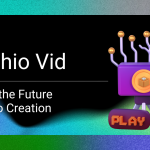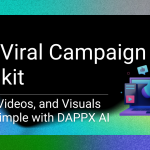Innovative Monetization Methods for Indie Games

Get to know more about the top monetization methods for indie game developers and explore profitable revenue streams to maximize your game’s earning potential.
TLDR:
- Indie games are a vibrant part of the gaming industry that celebrates artistic expression, innovation, and creative freedom
- Monetization is a crucial aspect of indie game development to generate revenue and cover production costs.
- There are various monetization methods available for indie games, including in-app purchases, ads, subscriptions, and downloadable contents (DLCs).
- DAPPX is a publishing platform that provides instant revenue sharing per game match and offers an innovative approach to monetizing indie games.
Introduction
Monetization plays a vital role in the success of indie game development. As an indie developer, it’s essential to choose the right strategy to earn revenue from your game while also providing value to players.
In this article, we will explore different monetization methods available for indie games and highlight one particular publishing platform called DAPPX that offers instant revenue sharing per game match.
What are indie games?
Indie games are video games that are created by independent game developers, rather than those who work for large development studios or publishers like Sega and Ubisoft. These developers often have smaller budgets and teams compared to mainstream game studios, but they have the freedom to explore unique ideas and creative concepts in their games.
One defining characteristic of indie games is their emphasis on artistic expression and innovation. Indie developers often take risks with their gameplay mechanics, storytelling techniques, and visual styles. They are not bound by the constraints of commercial success or market trends, allowing them to create experiences that are truly original and unconventional.
Examples of successful indie games include the Touhou Project series, Cave Story, Braid, Super Meat Boy, Minecraft, Fez, Shovel Knight, Undertale, and Cuphead. These games have gained popularity among gamers worldwide for their distinctive gameplay features, captivating narratives, and memorable art styles.
The popularity of indie games has grown significantly in recent years due to digital distribution platforms like Steam and Itch.io. These platforms make it easier for independent developers to release their games directly to consumers without the need for traditional publishing deals or physical copies. As a result, indie games have become more accessible to players around the world.
Monetization methods for indie games
#1 Game as a Service (Gaas) Model
Game developers generally earn from the “Games as a Service” (GaaS) model through various monetization strategies. This model involves providing ongoing content updates, expansions, and additional features to players after the initial release of the game. By offering regular updates and new experiences, developers can generate continuous revenue from player subscriptions or microtransactions.
Here are some ways game developers can generate revenue from the Gaas model:
In-App Purchases – Unlocking Additional Content
In-app purchases (IAPs) allow players to unlock additional content or features within the game by making real-money transactions. It can include cosmetic items like skins or customization options or even gameplay-enhancing elements like power-ups or extra levels.
In-app purchases offer several advantages for both developers and players. For developers, it provides a recurring source of income as players continue to make purchases throughout their gaming experience. Meanwhile, players have the flexibility to choose which optional content they want to invest in based on their preferences and budget.
Advertising – Leveraging Ads for Revenue
Another common monetization method for indie games is advertising. By integrating ads into your game, you can generate revenue from impressions or clicks. There are different types of ads to consider, such as banner ads, interstitial ads, rewarded video ads, native ads, and video pre-rolls.
Banner and interstitial ads are displayed within the game interface, while rewarded video ads offer players in-game rewards in exchange for watching a short video advertisement. Native ads blend seamlessly with the game’s aesthetics and provide a more organic advertising experience.
Video pre-rolls are short advertisements that play before the start of a video or during loading screens in games. Developers can integrate video pre-roll ads into their games and earn revenue based on impressions (the number of times an ad is viewed) or clicks.
When implementing advertising as a monetization strategy, it’s crucial to strike a balance between generating revenue and maintaining an enjoyable gaming experience for players. Excessive or intrusive ads can negatively impact player engagement and retention.
Subscriptions – Offering Premium Access
Subscriptions have gained popularity as a monetization method for indie games in recent years. This model involves offering players access to premium content or exclusive features through a recurring subscription fee. It provides developers with predictable monthly revenue streams while giving players ongoing value beyond the initial purchase.
Subscriptions work well for games that offer regular updates or expansions, creating an incentive for players to maintain their subscription to access new content continuously. Additionally, subscriptions can foster a sense of community among subscribers by providing exclusive benefits like early access or special events.
Downloadable Content (DLC) – Expanding Game Content
Downloadable Content (DLC) is another effective way to monetize indie games after their initial release. DLC refers to additional content packs that expand upon the base game experience, including new levels, characters, storylines, or gameplay mechanics.
By offering DLCs at an additional cost, developers can extend the lifespan of their games while generating additional revenue from existing players who want more content. It also allows developers to cater to specific player preferences by releasing DLCs based on popular demand or introducing new features based on feedback.
#2 Freemium Model
The freemium model is a popular monetization method in which the game is offered for free, but certain features or content within the game require payment. This model allows players to enjoy the basic version of the game without any cost. It provides opportunities to generate revenue through in-app purchases, subscriptions, or additional content packs.
#3 Paywall Model
Paywall is a method where users are required to make a payment or subscribe to access certain content or features within the game after it was offered free for some time. Developers can implement paywalls by offering premium levels, exclusive content, advanced features, or additional gameplay modes that are only accessible after a purchase or subscription.
When players encounter a paywall, they have the option to either make a payment to unlock the content immediately or continue playing with limited access to the game’s features. By providing valuable and engaging content behind paywalls, developers can incentivize players to make purchases and generate revenue.
#4 Sponsorship Model
Sponsorship involves partnering with brands or companies that are willing to invest in your game in exchange for advertising or promotional opportunities. This can include featuring their products or logos within the game, displaying ads during gameplay, or collaborating on special events or campaigns.
#5 Merchandise
Merchandise sales can be a great way to monetize an indie game. By creating and selling physical merchandise related to your game, such as t-shirts, posters, figurines, or art books, you can generate additional revenue while also building a community around your brand.
This could include selling the merchandise on online and offline shops.
#6 eSports
eSports refers to competitive gaming at a professional level. Indie games can tap into this market by organizing tournaments and competitions where players compete against each other for prizes and recognition. Revenue can be generated through ticket sales for live events, sponsorships from brands interested in reaching eSports audiences, and media rights.
#7 NFTs (Non-Fungible Tokens)
NFTs have gained popularity recently as a form of digital ownership and unique collectibles on blockchain platforms. Indie games can leverage NFTs by creating rare in-game items or that players can buy and trade as digital assets with real-world value.
DAPPX’s Innovative Monetization for Indie Game Developers
One innovative publishing platform that provides instant revenue sharing per game match is DAPPX. DAPPX is a Steam-like platform for play-to-earn games and offers indie game developers a unique opportunity to monetize their games in a decentralized manner using blockchain technology.
Here are the ways DAPPX helps indie games to monetize their games even without blockchain knowledge:
1) Integration of non-fungible tokens (NFTs) into games
NFTs are unique digital assets that can represent in-game items, characters, or even virtual real estate. By tokenizing these assets using blockchain technology, developers can enable players to buy, sell, and trade them on various marketplaces. This creates opportunities for developers to earn a percentage of each transaction made with these NFTs.
DAPPX leverages the power of blockchain to convert in-game items into NFTs.
2) Instant revenue sharing after game match
Allowing game developers to enable instant revenue sharing between players and developers. Each game match generates revenue, which is instantly distributed among the participating players and the developer based on predefined smart contracts. This approach ensures transparency, fairness, and real-time earnings for all parties involved.
3) Tokenization
DAPPX tokenization can be considered as a revenue stream for indie game developers in several ways. By leveraging the power of the DAPPX game publishing platform, developers have the opportunity to monetize, publish, and tokenize their gaming projects for free.
Tokenization allows indie game developers to create unique digital assets within their games that can be bought, sold, and traded by players. These digital assets can include in-game items, characters, skins, or even virtual real estate. By tokenizing these assets using DAPPX tokens, developers can generate revenue through sales and transactions made by players.
Additionally, tokenization opens up new possibilities for crowdfunding and fundraising within the gaming industry. Developers can offer exclusive tokens or limited edition items as rewards to backers who support their projects. This not only provides a source of funding but also creates a sense of community engagement and loyalty among players.
Furthermore, DAPPX tokenization can help make games more sustainable for developers. By creating an ecosystem where players actively trade and engage with digital assets, indie game developers have the potential to earn ongoing revenue from secondary market transactions.
Conclusion
Monetization is a crucial aspect of indie game development, allowing developers to cover production costs and generate profits. By exploring various monetization methods such as in-app purchases, advertising, subscriptions, and DLCs, indie game developers can maximize their earning potential while delivering value to players.
Additionally, platforms like DAPPX provide an innovative approach to monetizing indie games through instant revenue sharing per game match using blockchain technology.
DAPPX tokenization also offers game developers an innovative way to generate revenue streams by tapping into the growing interest in blockchain technology and decentralized finance within the gaming industry. It provides opportunities for monetization, crowdfunding, and sustainability while enhancing player engagement and interaction with in-game assets.
Such platforms offer exciting possibilities for both developers and players alike by fostering transparency, fairness, and community-driven development.
FAQs:
- How do I choose the right monetization method for my indie game?
The choice of monetization method depends on factors such as your target audience, gameplay mechanics, and overall goals for your game. Consider conducting market research to understand player preferences and test different strategies to find what works best for your specific game.
- Are there any risks associated with implementing ads in my indie game?
While ads can be a lucrative source of revenue, it’s important to balance ad placement with user experience. Excessive or intrusive ads can negatively impact player engagement and retention. Carefully consider the placement, frequency, and relevance of ads to maintain a positive gaming experience.
- How can DAPPX benefit indie game developers?
DAPPX offers instant revenue sharing per game match through blockchain technology, providing transparency, fairness, and real-time earnings for developers. It also enables community-driven development and direct engagement between developers and players.
- Can I combine multiple monetization methods for my indie game?
Absolutely! Many successful indie games utilize a combination of monetization methods to diversify their revenue streams. Consider combining in-app purchases with advertising or offering subscriptions alongside DLCs to provide players with different options while maximizing your earning potential.
- What should I prioritize when choosing a monetization method?
When choosing a monetization method, prioritize player satisfaction and value delivery. Focus on creating an enjoyable gaming experience while offering optional content or features that enhance gameplay rather than detracting from it. Building strong relationships with your player base is key to long-term success.
Stay glued to our community if you do not want to miss NFT airdrops and staking opportunities!
|DAPPX | Acent Metaweb | Your Earth DAO | Twitter | Telegram | Facebook | KuCoin / $DAPPX






